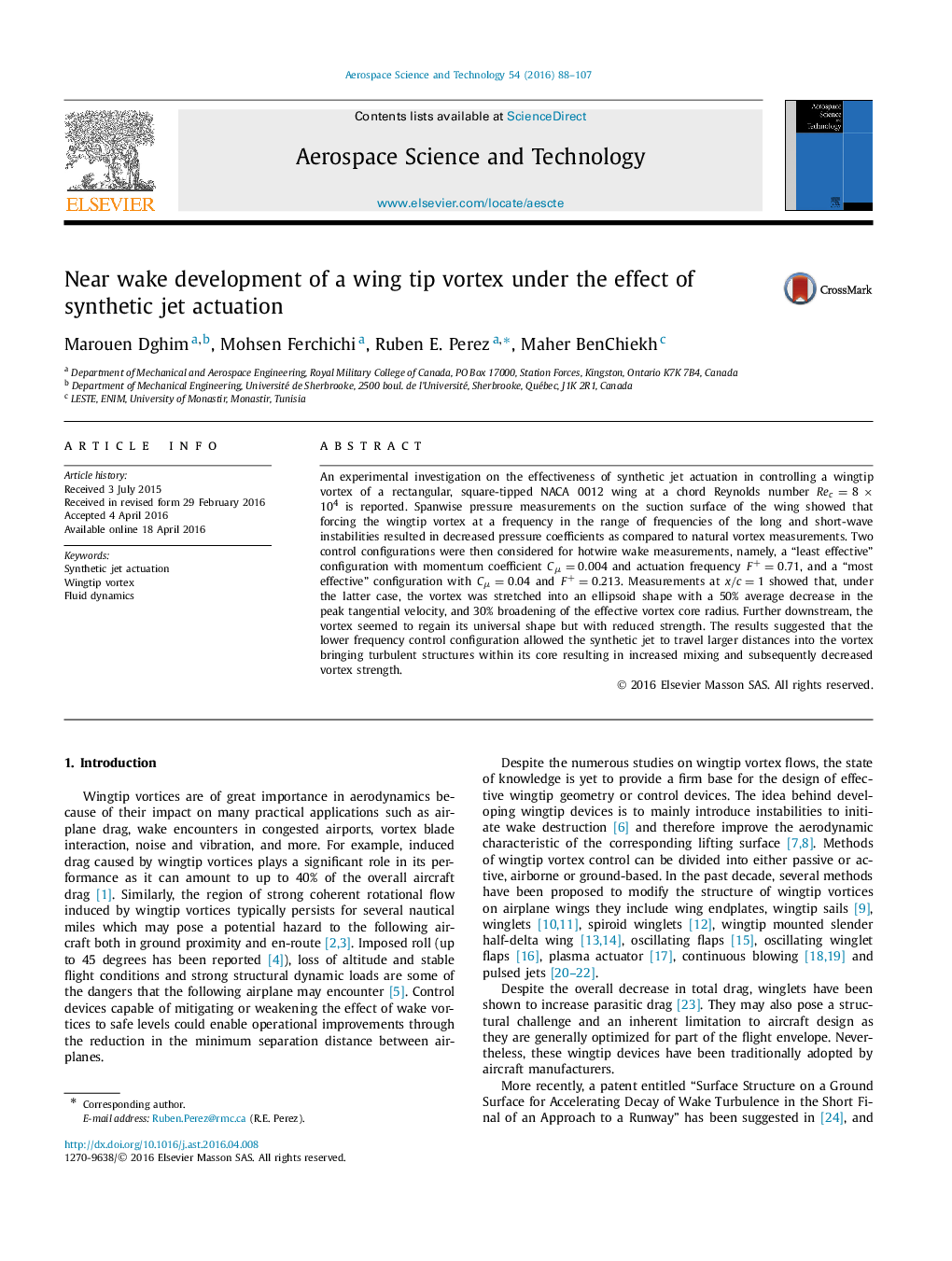| Article ID | Journal | Published Year | Pages | File Type |
|---|---|---|---|---|
| 8058551 | Aerospace Science and Technology | 2016 | 20 Pages |
Abstract
An experimental investigation on the effectiveness of synthetic jet actuation in controlling a wingtip vortex of a rectangular, square-tipped NACA 0012 wing at a chord Reynolds number Rec=8Ã104 is reported. Spanwise pressure measurements on the suction surface of the wing showed that forcing the wingtip vortex at a frequency in the range of frequencies of the long and short-wave instabilities resulted in decreased pressure coefficients as compared to natural vortex measurements. Two control configurations were then considered for hotwire wake measurements, namely, a “least effective” configuration with momentum coefficient Cμ=0.004 and actuation frequency F+=0.71, and a “most effective” configuration with Cμ=0.04 and F+=0.213. Measurements at x/c=1 showed that, under the latter case, the vortex was stretched into an ellipsoid shape with a 50% average decrease in the peak tangential velocity, and 30% broadening of the effective vortex core radius. Further downstream, the vortex seemed to regain its universal shape but with reduced strength. The results suggested that the lower frequency control configuration allowed the synthetic jet to travel larger distances into the vortex bringing turbulent structures within its core resulting in increased mixing and subsequently decreased vortex strength.
Related Topics
Physical Sciences and Engineering
Engineering
Aerospace Engineering
Authors
Marouen Dghim, Mohsen Ferchichi, Ruben E. Perez, Maher BenChiekh,
